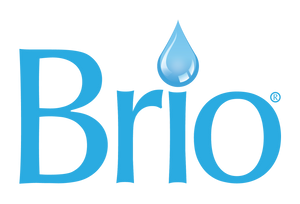Are you planning to remodel your home, or have you already started? If so, now is the time to upgrade your water filtration system.
Investing in a new water filtration system today will yield many benefits down the line. Whether your goal is to improve the taste of your water, improve skin and hair health, or protect plumbing, a quality filtration system can yield all these benefits — among others. And since you are already undergoing renovations, this is the perfect opportunity to install or upgrade systems that can make a significant difference.
The first step when choosing water filter options is to compare systems to find the best fit based on several variables. Before you make a decision, ask yourself these five questions.
5 Questions To Ask Before Investing in a Water Filtration System
Remodeling is the perfect time to install a brand-new water filtration system or upgrade your existing system based on your current and future goals. While living in your home, you may have noticed issues with your water source, such as high chlorine levels, hard water, or recurring bacterial contamination.
Question 1: What is the main water quality concern I am trying to address?

The quality of your source water is often the most crucial factor when determining which water filtration system is best for you.
Start by testing your water at home. Once you identify specific contaminants, you can target them more effectively. For example, if your primary concern is chlorine, you’ll want to look into a system that includes a carbon filter. When targeting heavy metals or PFAS, a reverse osmosis (RO) system can help address these contaminants. For bacteria, UV disinfection may be necessary.
When hard water is the primary concern, you’ll want to target calcium and magnesium with a softener system. Check out Brio’s whole-house water softeners, which are universally compatible with water filtration solutions.
Question 2: Do I want a point-of-entry or point-of-use system?

While remodeling, you may have more options concerning the type of water filtration system you install, which is why understanding the two main categories matters.
Home water filtration systems typically fall under two main categories: whole-house/point-of-entry or point-of-use.
Here is what to consider:
• Whole-house systems are installed where the main water line enters the home, filtering all water used for drinking, appliances, and bathing. The main benefit of this system is its comprehensive coverage. However, it comes at a higher cost.
• Point-of-use systems are installed at specific outlets, like under a kitchen sink. These have lower upfront costs and are often easier to install. They are also a great solution for renters. The downside is that you only benefit from enhanced filtration at specific locations.
Question 3: What system will meet my household output needs?

You’ll want to choose a water filtration system with a capacity that matches your daily consumption. Most often, output is measured in gallons per minute (GPM) for whole-house systems and gallons per day (GPD) for point-of-use reverse osmosis systems.
For example, the Brio Whole-House Water Softener System offers a flow rate of 10-12 gallons per minute. In comparison, the Brio SIMPL Tankless Reverse Osmosis (RO) Undersink Filtration System provides up to 400 gallons of filtered water per day.
Question 4: What's the best option based on available space and my current budget?

You can’t ignore your budget and space requirements when choosing a system. However, if you’re remodeling and want to upgrade your system, consider options beyond a water pitcher or faucet-mounted filter.
Advanced purification options may require you to balance cost with unit size and filtration effectiveness, so you can choose the best system based on your budget, available space, and water quality concerns. If you have a limited budget and little counter space, a compact undersink filtration system is often ideal.
Depending on your budget and output needs, two great 4-stage RO options include:
• Brio SIMPL Tankless Reverse Osmosis (RO) Undersink Filtration System (600 GPD)
• Brio SIMPL Tankless Reverse Osmosis (RO) Undersink Filtration System (800 GPD)
These systems are ideal when space is limited, you have a moderate budget, and you are seeking the highest purity.
Question 5: What about maintenance requirements?

If you are deciding between a whole-house and a point-of-use system, you may be considering overall maintenance costs.
Depending on source water quality and usage, you will typically need to change filters every 6 to 12 months. The plus side is that the system typically only needs maintenance where the main water line enters the home.
While the frequency of filter changes is similar for point-of-use systems (6 to 12 months), maintenance involves upkeep at each specific outlet, such as a kitchen sink, bathroom faucet, and showerhead. That’s a slightly bigger burden that could influence your decision.
Choose the Right Water Filtration System for Your Remodeling Project
Remodeling projects can be overwhelming, which is why it’s important to lean on experts at every stage. For your water filtration needs, Brio can help you choose the right solution.
Browse available water filtration systems and contact Brio today!




